Archive for May, 2010
-
Red Wolf – an endangered flourishing animal
Posted in Wildlife A-Z | May 28, 2010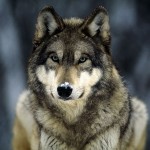 The red wolf was been declared an extinct animal within the wild in the year 1980 subsequent to the most recent recognized wild wolves that were captured as well as taken out of their wild to start on a confined breeding program. In addition there are at the present a predictable 200 individuals are found in the regions of North Carolina as well as various other areas where the red wolves have been introduced again. The red wolf, to some extent is smaller when compared with its family member, the gray wolf; moreover its build is further slender, in addition to its head additional elongated. The coat of the red wolf is tawny red by means of, a number of gray and black colored areas. The back of the wolf tends to be a little darker in the color [...]
The red wolf was been declared an extinct animal within the wild in the year 1980 subsequent to the most recent recognized wild wolves that were captured as well as taken out of their wild to start on a confined breeding program. In addition there are at the present a predictable 200 individuals are found in the regions of North Carolina as well as various other areas where the red wolves have been introduced again. The red wolf, to some extent is smaller when compared with its family member, the gray wolf; moreover its build is further slender, in addition to its head additional elongated. The coat of the red wolf is tawny red by means of, a number of gray and black colored areas. The back of the wolf tends to be a little darker in the color [...] -
Manatees – the huge sea cows
Posted in Wildlife A-Z | May 26, 2010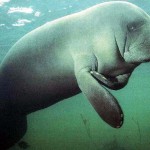 Manatees are occasionally acknowledged as sea cows; in addition their unhurried swiftness lends good point to the assessment. On the other hand, in spite of their gigantic immensity, they are elegant swimmers in the coastal waters as well as rivers. Controlling themselves by means of their physically powerful tails, manatees naturally glide the length of 5 miles (almost 8 km) in one hour on the other hand can swim almost 15 miles (around 24 km) in one hour in numerous short bursts. Manatees are generally seen single-handedly, in pairs, or else in small groupings of half dozen or else fewer animals. As of above the surface of the water, the nose of the animal and nostrils are repeatedly the barely thing that is noticeable. Manatees by no means [...]
Manatees are occasionally acknowledged as sea cows; in addition their unhurried swiftness lends good point to the assessment. On the other hand, in spite of their gigantic immensity, they are elegant swimmers in the coastal waters as well as rivers. Controlling themselves by means of their physically powerful tails, manatees naturally glide the length of 5 miles (almost 8 km) in one hour on the other hand can swim almost 15 miles (around 24 km) in one hour in numerous short bursts. Manatees are generally seen single-handedly, in pairs, or else in small groupings of half dozen or else fewer animals. As of above the surface of the water, the nose of the animal and nostrils are repeatedly the barely thing that is noticeable. Manatees by no means [...] -
The Lappet-faced vulture of the Old World
Posted in Wildlife A-Z | May 24, 2010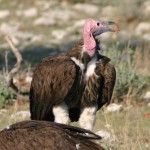 The Lappet-faced vulture is actually an Old World vulture that has got its name as of the lappets (the flat overlapping as well as the hanging pieces) that are sited on its bare, near the pink-colored head. The feathers of the lappet-faced vultures are by and large black and brown; however it has a white-colored underbelly. By means of a wingspan of almost 9 feet, it dominates various other vultures while feeding. Vultures are the scavengers; this means that they consume animals, which are died. A number of vultures consume barely hefty carcasses. On the other hand, the Lappet-faced vulture will as well eat smaller items, which includes living prey.This provides them alternating food sources once carcasses are uncommon. The Lappet-faced vulture [...]
The Lappet-faced vulture is actually an Old World vulture that has got its name as of the lappets (the flat overlapping as well as the hanging pieces) that are sited on its bare, near the pink-colored head. The feathers of the lappet-faced vultures are by and large black and brown; however it has a white-colored underbelly. By means of a wingspan of almost 9 feet, it dominates various other vultures while feeding. Vultures are the scavengers; this means that they consume animals, which are died. A number of vultures consume barely hefty carcasses. On the other hand, the Lappet-faced vulture will as well eat smaller items, which includes living prey.This provides them alternating food sources once carcasses are uncommon. The Lappet-faced vulture [...] -
Green Anaconda – Gorgeous Yet Grievous
Posted in Wildlife A-Z | May 21, 2010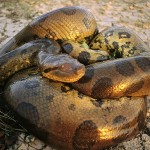 Green anacondas are members of the boa family. The green anaconda, which is native to South America, is the largest snake on the planet. Its distant cousin is the reticulated python, which can reach similar lengths. The mammoth girth of the anaconda makes it heavy by two times. Green anacondas can grow up to 29 feet. They can weigh nearly 550 pounds or 227 kg. In diameter they measure more than 30 centimeters. Female anacondas tend to be larger than their male counterparts. All anacondas originate in Southern America. Besides the green anaconda, other species include the yellow and Bolivian anacondas. They are smaller in comparison with the green anaconda. Green Anaconda tend to inhabit marshes, swamps, and streams that move slowly. The tropical [...]
Green anacondas are members of the boa family. The green anaconda, which is native to South America, is the largest snake on the planet. Its distant cousin is the reticulated python, which can reach similar lengths. The mammoth girth of the anaconda makes it heavy by two times. Green anacondas can grow up to 29 feet. They can weigh nearly 550 pounds or 227 kg. In diameter they measure more than 30 centimeters. Female anacondas tend to be larger than their male counterparts. All anacondas originate in Southern America. Besides the green anaconda, other species include the yellow and Bolivian anacondas. They are smaller in comparison with the green anaconda. Green Anaconda tend to inhabit marshes, swamps, and streams that move slowly. The tropical [...] -
Burmese Python – Dangerous Beauty
Posted in Wildlife A-Z | May 19, 2010 Burmese pythons have a beautiful pattern of skin. Their growth rate is rapid, and their disposition is generally docile. Among reptile owners, they are known as a large snake of choice. These giant constrictors receive poor care and treatment. They are often released in the wild. Occasionally, there may be attacks on handlers, which can be life-threatening in some cases. The Burmese python is native to the forests and swamps of Southeast Asia. They are one of the largest snake species in the world. They have the ability to reach 23 feet in length. They can weigh up to 200 pounds. Their girth is as large as a telephone pole. Young pythons spend the majority of their times in the trees. Climbing trees becomes difficult as they grow in size and [...]
Burmese pythons have a beautiful pattern of skin. Their growth rate is rapid, and their disposition is generally docile. Among reptile owners, they are known as a large snake of choice. These giant constrictors receive poor care and treatment. They are often released in the wild. Occasionally, there may be attacks on handlers, which can be life-threatening in some cases. The Burmese python is native to the forests and swamps of Southeast Asia. They are one of the largest snake species in the world. They have the ability to reach 23 feet in length. They can weigh up to 200 pounds. Their girth is as large as a telephone pole. Young pythons spend the majority of their times in the trees. Climbing trees becomes difficult as they grow in size and [...] -
Bird of Paradise
Posted in Wildlife A-Z | May 17, 2010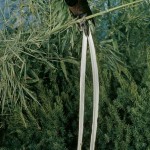 The Paradisaeidae family has more than three dozen species of birds. They are often referred to as bird of paradise. Their colors are striking and their plumage is bright with blue, yellow, green, and scarlet. These myriad colors make them the most attractive birds on the planet. They are also the most dramatic of all birds. Males tend to sport wonderful elongated feathers or ruffs that are vibrantly colored. These elongated feathers are also known as streamers or wires. Some of the Bird of Paradise species have elaborate head plumes. Other distinctive features include breast shields and head fans. Male birds exhibit their bright colors and unique ornaments to attract the female birds. Their dances, poses, and rituals are unique and elaborate. [...]
The Paradisaeidae family has more than three dozen species of birds. They are often referred to as bird of paradise. Their colors are striking and their plumage is bright with blue, yellow, green, and scarlet. These myriad colors make them the most attractive birds on the planet. They are also the most dramatic of all birds. Males tend to sport wonderful elongated feathers or ruffs that are vibrantly colored. These elongated feathers are also known as streamers or wires. Some of the Bird of Paradise species have elaborate head plumes. Other distinctive features include breast shields and head fans. Male birds exhibit their bright colors and unique ornaments to attract the female birds. Their dances, poses, and rituals are unique and elaborate. [...] -
Magnificent Bald Eagle
Posted in Wildlife A-Z | May 14, 2010 The bald eagle has a feathered head which is snow white. It is not bald as the name suggests. It has a white tail. The eagle is the national bird of the United States. The bald eagle was on the verge of extinction in the United States. Bald eagles were a favorite among hunters. They were hunted for the so-called protection of fishing grounds. Pesticides such as DDT have caused havoc among the eagle population. The other birds, too, have not been spared. These chemicals thrive in fish, which makes the majority of the diet of the eagles. These chemicals weaken the eggshells of the birds and limit the reproductive ability. The use of DDT has been restricted since 1972. Thereafter, the eagle populations have improved. Reintroduction programs have [...]
The bald eagle has a feathered head which is snow white. It is not bald as the name suggests. It has a white tail. The eagle is the national bird of the United States. The bald eagle was on the verge of extinction in the United States. Bald eagles were a favorite among hunters. They were hunted for the so-called protection of fishing grounds. Pesticides such as DDT have caused havoc among the eagle population. The other birds, too, have not been spared. These chemicals thrive in fish, which makes the majority of the diet of the eagles. These chemicals weaken the eggshells of the birds and limit the reproductive ability. The use of DDT has been restricted since 1972. Thereafter, the eagle populations have improved. Reintroduction programs have [...] -
Venomous Cane Toads
Posted in Wildlife A-Z | May 12, 2010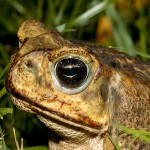 Venomous cane toads have been much maligned in recent times. They gained a bad reputation after they were released into the Australian ecosystem in 1935. They were introduced in Australia to destroy the population of cane beetles. However, this turned out to be a major failure. Instead, the cane toads had extensive breeding and reproduced in large numbers. Nearly 3000 cane toads were introduced among the sugarcane plantations in north Queensland in the year 1935. Their population now runs into millions. Their habitat includes thousands of square miles of northeastern Australia. Presently, they are viewed as pests. A lot of government efforts are directed toward eradicating these toads. Citizens have been told to collect and dispose these toads. Cane [...]
Venomous cane toads have been much maligned in recent times. They gained a bad reputation after they were released into the Australian ecosystem in 1935. They were introduced in Australia to destroy the population of cane beetles. However, this turned out to be a major failure. Instead, the cane toads had extensive breeding and reproduced in large numbers. Nearly 3000 cane toads were introduced among the sugarcane plantations in north Queensland in the year 1935. Their population now runs into millions. Their habitat includes thousands of square miles of northeastern Australia. Presently, they are viewed as pests. A lot of government efforts are directed toward eradicating these toads. Citizens have been told to collect and dispose these toads. Cane [...] -
Wonderful Warty Newt
Posted in Wildlife A-Z | May 10, 2010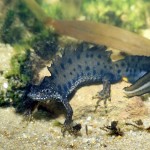 The warty newt is also known as the great crested newt. It resides only in Europe. Female newts are larger than the male ones. They reach up to seven inches in length. This feature makes these amphibians the largest newts in Europe. The warty newt lives up to its name. Its skin is covered by small bumps. The skin is made up of special glands that secrete a milky substance that is acrid in nature. This is used to combat predators. The jagged crest that appears on the backs of males gives the newts the other name. The crest forms during the spring and breeding season. The upper surface of these newts are dark colored. Their lower surface comprises of orange and yellow with dark spots. Their flanks are adorned with white speckles. Their tails are [...]
The warty newt is also known as the great crested newt. It resides only in Europe. Female newts are larger than the male ones. They reach up to seven inches in length. This feature makes these amphibians the largest newts in Europe. The warty newt lives up to its name. Its skin is covered by small bumps. The skin is made up of special glands that secrete a milky substance that is acrid in nature. This is used to combat predators. The jagged crest that appears on the backs of males gives the newts the other name. The crest forms during the spring and breeding season. The upper surface of these newts are dark colored. Their lower surface comprises of orange and yellow with dark spots. Their flanks are adorned with white speckles. Their tails are [...] -
Amazing American Crocodile
Posted in Wildlife A-Z | May 7, 2010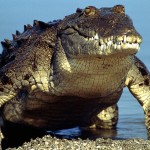 The American crocodile is viewed as an endangered species in most parts of Central, South, and North American ranges. Data based on surveys is extremely poor or lacking in countries other than the United States. Conservationists and researchers agree that widespread illegal hunting and habitat erosion has reduced the numbers of this reptile. The population of the American crocodile has now reached critical levels. There is a small population of crocodiles that inhabit Southern Florida. However, most of them are found in Southern Mexico, the Caribbean, Central America, and the northern regions of South America. Their habitat includes fresh or brackish water found in river estuaries, mangrove swamps, and coastal lagoons. The American crocodile [...]
The American crocodile is viewed as an endangered species in most parts of Central, South, and North American ranges. Data based on surveys is extremely poor or lacking in countries other than the United States. Conservationists and researchers agree that widespread illegal hunting and habitat erosion has reduced the numbers of this reptile. The population of the American crocodile has now reached critical levels. There is a small population of crocodiles that inhabit Southern Florida. However, most of them are found in Southern Mexico, the Caribbean, Central America, and the northern regions of South America. Their habitat includes fresh or brackish water found in river estuaries, mangrove swamps, and coastal lagoons. The American crocodile [...]


